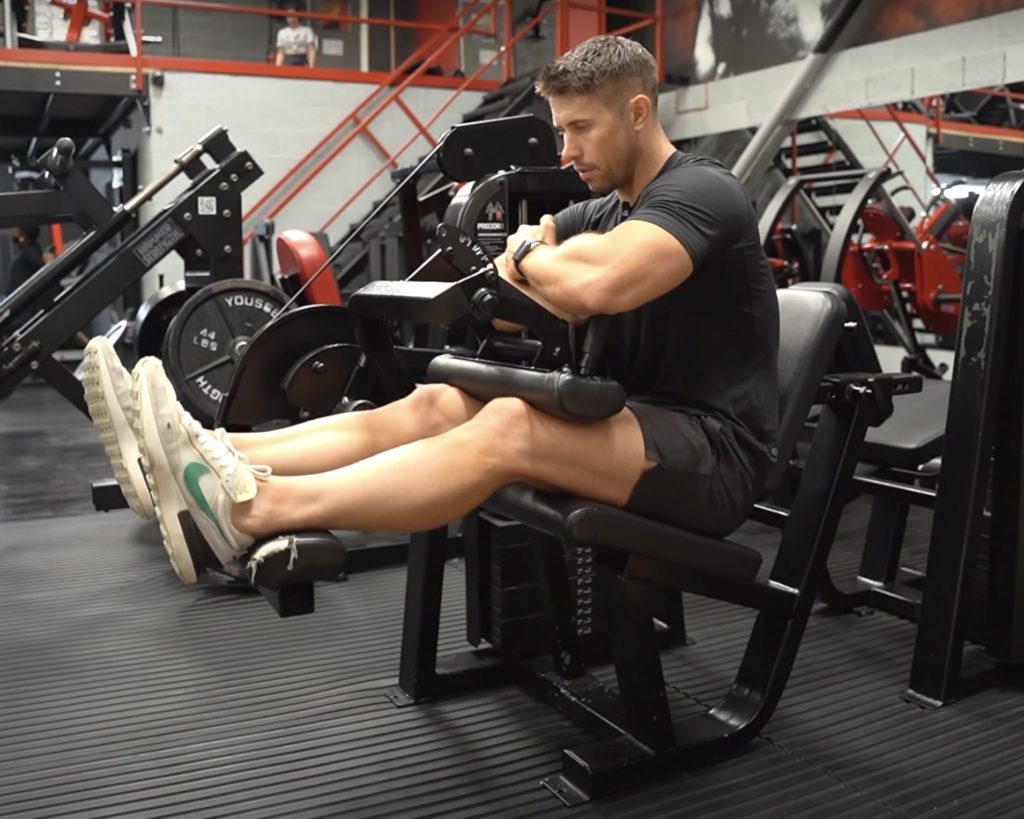To build your hamstrings then you’ll want to be including two types of exercises in your workout routines:
- Deadlifts (barbell, dumbbell, Romanian, stiff-legged, etc.) and other hip hinges (back extensions, pull-throughs etc.).
- Knee flexion exercises like hamstring curl variations (seated, lying, single-leg, GHR’s, Nordics, stability ball etc.)
Benefits of using hamstring curls?
The musculature in your hamstrings (except for the short head of your biceps femoris) acts as both hip extensors and knee flexors. Training both of these functions will activate your hamstrings a little differently. They can also be manipulated to target your hamstrings at different muscle lengths.
The lying ham curl is the most common hamstring machine. It’s hard to do wrong as long as you’re positioned on the machine correctly and your hips remain braced down hard into the pad.
But it’s easier to do seated hamstring curls in a way that fails to maximize their effectiveness. Do them right and they’ll have an advantage over the lying variant. Why? Because they target your hamstrings at longer muscle lengths since your hips are more flexed.
When your muscles are applying force at longer muscle lengths, it creates a powerful growth stimulus. (Albeit, there are benefits to training at shorter muscle lengths, too.)
Here’s are some common mistakes I see when performing seated hamstring curls:
- Not aligning your knees with the axis of rotation of the machine.
- Hips should be flexed and torso upright.
- Not locking yourself down hard or getting a good grip on the knee pad in front.
- Not extending your knees far enough to maximize the active stretch of your hamstrings.
- Thinking seated hamstring curls are just about the stretch at the top and forgetting to fully flex your knees and contract hard at the bottom.
How best to perform seated hamstring curls

